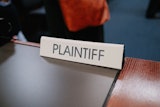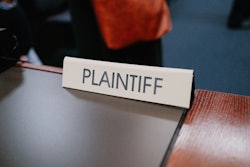
When someone is injured at a recreation facility, the first person usually held responsible for the injuries is the operator of the facility. Under the theory of premise liability, the operator of a recreation facility owes a duty of reasonable care to guard against any dangerous conditions on the property.
This duty is also applied to the property’s owner, even if they are not in control of the property, if it can be established that the owner knew about or should have discovered the dangerous condition and failed to act.
The theory behind holding landowners and operators liable for injuries suffered by patrons — or invitees — is not only because the invitees provide an economic benefit to the landowners and facility operators, but because the owner and operator are in the best position to know of or discover any dangerous conditions on the property. A good example of how the courts handle premises liability cases is Doyle v. San Diego Metropolitan Transit System, 37-2018-00016374-CU-PO-CLT.
Warehouse turned rec facility
The San Diego Metropolitan Transit System owned a building in San Diego that was permitted for use as a storage warehouse. MTS leased a portion of the warehouse to San Diego Sports Entertainment Center LLC, a paintball business owned by Diana Ocampo. After taking possession of the property, Ocampo communicated with both Timothy Allison, MTS’s manager of real estate assets, and Richard Rose, MTS’s property manager for the building, about code compliance and permitting issues.
Even though the building did not have a certificate of occupancy for “assembly” use, which would have allowed for large gatherings, Ocampo started operating her paintball business without the proper permits. Ocampo notified MTS that members of the public, including children, were coming to the property for private parties.
While still renting the warehouse, SDSE signed an amended lease with MTS to add two subtenants and continue using a portion of the warehouse as a sports facility, including sporting events, sport fitness training, and virtual reality game entertainment. SDSE then subleased a portion of the warehouse to a third subtenant, Vault PK (Vault), which began operating a parkour gym. SDSE informed MTS that Vault was open to the public, including children. Vault’s owners spoke with MTS on multiple occasions about obtaining building permits for Vault.
A few months after subleasing the property from SDSE, Vault built an elevated observation platform sitting atop “four-by-four” posts. Vault owners built and designed the structure themselves, without SDSE’s approval, even though they did not have a contractor’s license or the necessary permits. When SDSE saw the platform, it contacted Vault and told them that they should have a structural engineer look at the platform.
SDSE also called Rose, MTS’s property manager, and informed him about the platform. Rose had visited the warehouse multiple times during SDSE’s tenancy, including after Vault began using the space. During one visit, SDSE and Rose walked up onto the platform together. About a week after Rose and SDSE stood on the platform, Ocampo, the owner of SDSE, put caution tape around it to close off access, but someone removed the caution tape.
While a group of children and adults were on the platform having pizza and watching the events below, the platform collapsed, causing 22 children and two adults to be taken to the hospital. Shortly after the collapse, an inspector for the City of San Diego inspected the property and found several code violations, including a lack of proper permits, insufficient egress exits, inadequate fire safety systems and faulty construction relating to the platform. The inspector also observed an unpermitted change of occupancy use, meaning that the building tenants were operating businesses in a manner inconsistent with the allowed use. He testified that if not for the unpermitted occupancy or use of the building, the platform would have never existed, there would not have been “30 plus people on that deck, and it wouldn’t have collapsed.”
Two theories of liability
As a result of the injuries suffered, some of the people on the deck sued MTS, SDSE and Vault. While there was no question that SDSE, as the leaseholder, and Vault, as the occupier, were negligent for breaching their duty to provide a safe environment, the biggest issue for the jury to decide was whether MTS had any liability, since it did not control the property. The plaintiffs alleged two theories of liability: 1) that MTS had actual and constructive notice the platform was a dangerous condition, and MTS could have prevented the harm; and 2) that MTS created a dangerous condition on its property by failing to ensure its tenants obtained proper permits and complied with applicable codes.
In examining the second theory — that MTS created a dangerous condition by allowing Vault and SDSE to operate without the proper permits and certificate of occupancy — the court concluded that the allegation falls short, because it does not tie that use to a physical condition of the property itself. In addition, even if MTS created a dangerous condition by allowing its warehouse to be used as a “family fun zone” without these required physical improvements, the court held that the plaintiffs’ evidence did not show how the lack of these physical improvements created a reasonably foreseeable risk that the plaintiffs would suffer the kind of injury they did from the collapsed platform. The plaintiffs’ own witness agreed that the platform failed because it was poorly constructed and built without the proper permits, not because of the bathroom or fire suppression violations. The same witness also agreed that the lack of required emergency exits at the warehouse had nothing to do with the platform collapsing.
Turning to the first theory, the court examined whether MTS had actual or constructive notice of the platform and its dangerous condition, and whether there was sufficient time before its collapse to take protective measures. On this theory, the court found substantial evidence that MTS had notice of the platform before its collapse. In particular, the court noted that Rose not only was told about the platform, but that he visited the warehouse on multiple occasions after Vault built the platform and even stood on it before the accident. Rose himself admitted that he saw the platform two days before it collapsed.
As for whether MTS knew of the platform’s dangerous condition, the court pointed to the facts that Rose, as MTS’s property manager for the building, said that when he saw the platform, he “perceived something that wasn’t right,” he “had a lot of questions about” it, and he tried to call SDSE and Ocampo because it “was a high priority” to get “some answers” and “preferably to meet there on-site.” Although MTS argued that the platform appeared stable to the untrained eye, and that Rose’s concerns were only about the purpose of the platform as opposed to its safety, the jury concluded that, based on the evidence, MTS had actual or constructive notice that the platform was a dangerous condition.
In determining whether MTS had enough time before the platform collapsed to take protective measures, the court found that even if Rose only learned of the platform two days before the accident, MTS still had time to request that Vault or SDSE put a warning sign on the platform, limit the number of people allowed on it, discontinue its use or restrict its access with caution tape, as Ocampo and SDSE had already done at one point.
Even if a jury could find that it had actual and constructive notice the platform was a dangerous condition and had time to prevent the harm, MTS argued that it did not “control” the property because it was leased to SDSE and therefore had no duty to inspect it to ensure code compliance. In rejecting this argument, the court held that MTS did not need to have immediate control over the premises to be liable. Under the premises liability, the court found that all that was required was that MTS had notice of the dangerous condition, with sufficient time to protect against it, and failed to act.
Responsibility breakdown
Having concluded that MTS could be liable as the landowner, the jury next needed to assign fault to each of the parties and decide how much each of the nine plaintiffs would receive.
In dividing fault, the jury found that as the leaseholder, SDSE was 50% at fault, and responsible for $630,000, while Vault was 35% responsible and ordered to pay $441,000. The jury also decided MTS shared 15% of the responsibility and required it to pay $189,000. In awarding $1.26 million in damages to the plaintiffs, the jury sent a clear message to property owners and those who rent and operate recreational activities on said property.
First, just because an owner leases or rents their property to another person, it does not mean that they are free of liability for any injuries that may happen on the property. As the court noted, if the landowner has actual notice of a dangerous condition, and has sufficient time to correct the condition, they are required to either correct it or prevent access to the area.
Second, even though the jury found MTS liable, it also made it clear that the leaseholder SDSE was mostly at fault for the platform’s collapse. As the occupier of the property, the jury found SDSE had the greatest duty to protect those injured. As noted above, the people injured when the platform collapsed were invitees under the law, not a licensee or trespasser. The general rule when an invitee is injured on another’s property is that an owner or occupier of land has a duty to use reasonable care to keep the premises in a safe condition and to use reasonable care to protect an invitee from reasonably foreseeable injuries.
The Doyle case provides one final lesson for lessees and sublessees. Before altering or improving the space or facility being rented (e.g., building a platform), it is important to not only get approval from the owner, but to receive the proper permits and to hire a licensed contractor. Building the platform in this case was reckless on the part of the sublessee, especially since the platform was not properly built. But from a risk-management and liability-mitigation standpoint, the sublessee could have reduced or eliminated its liability had it taken these measures, since the legal liability would have been transferred to the contractor.




































